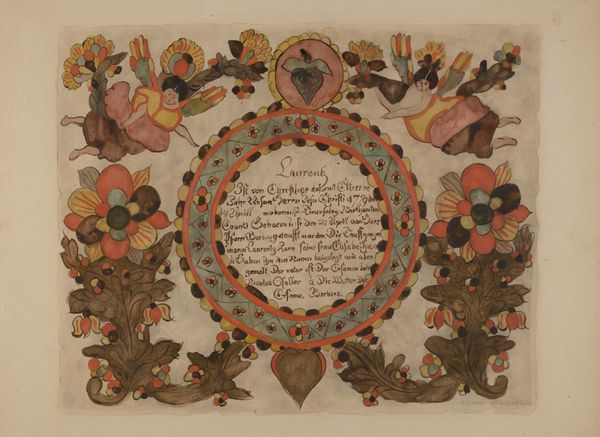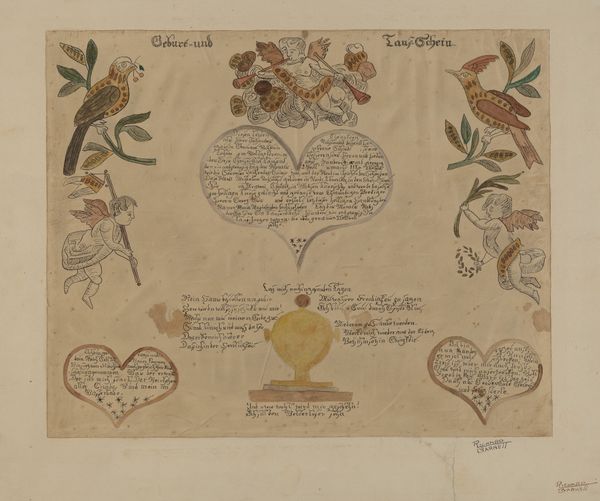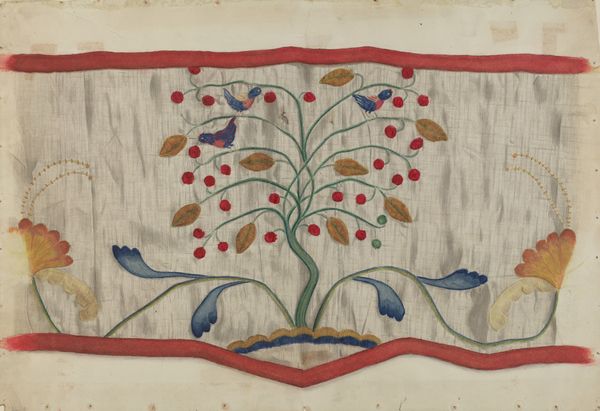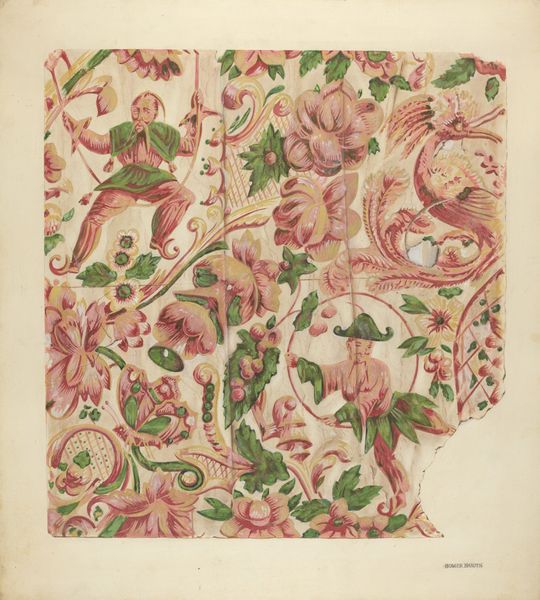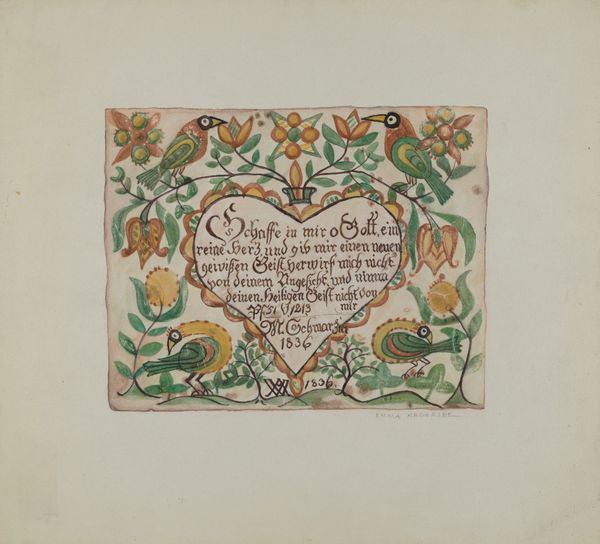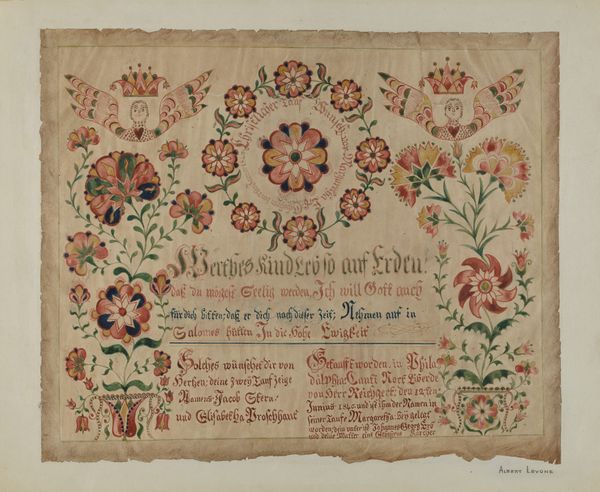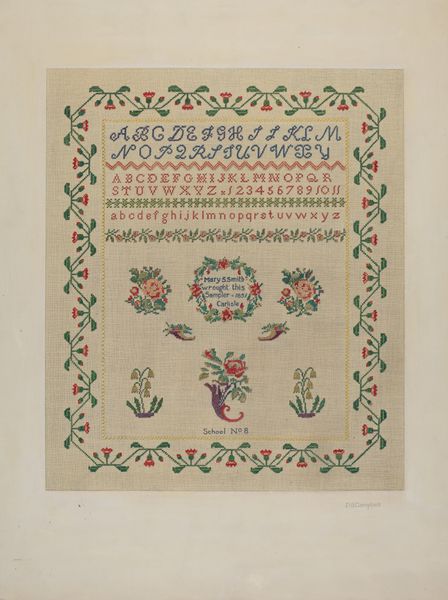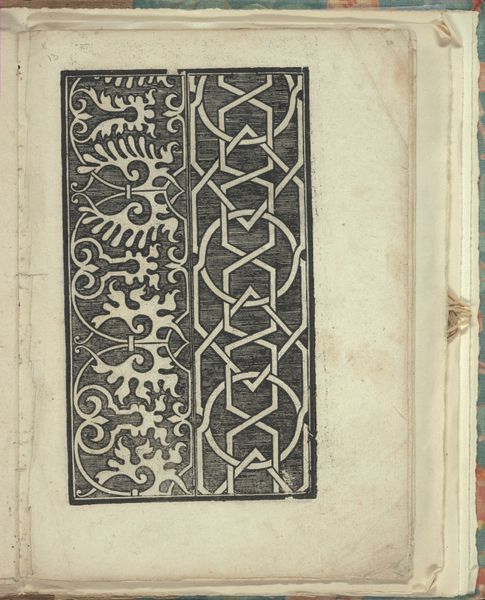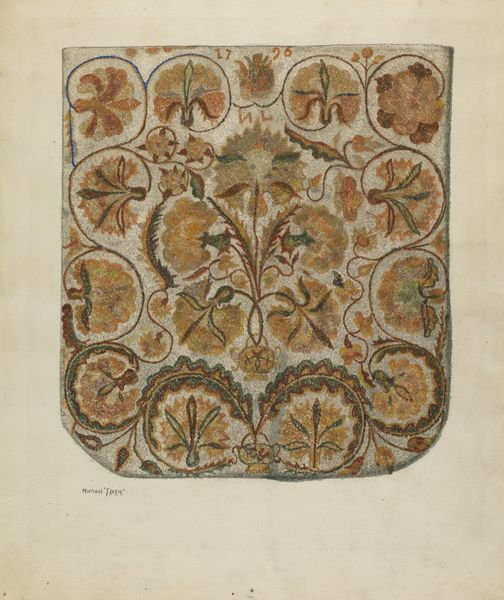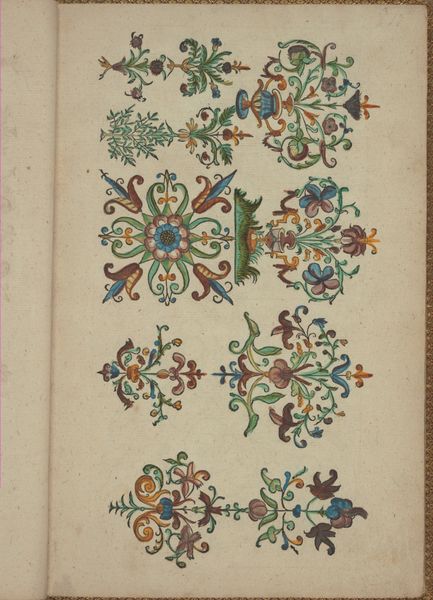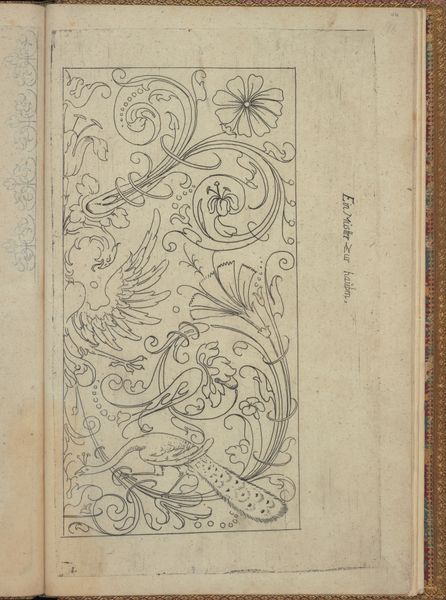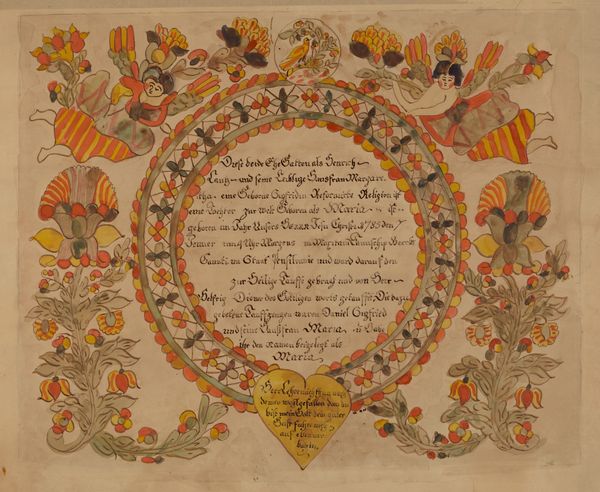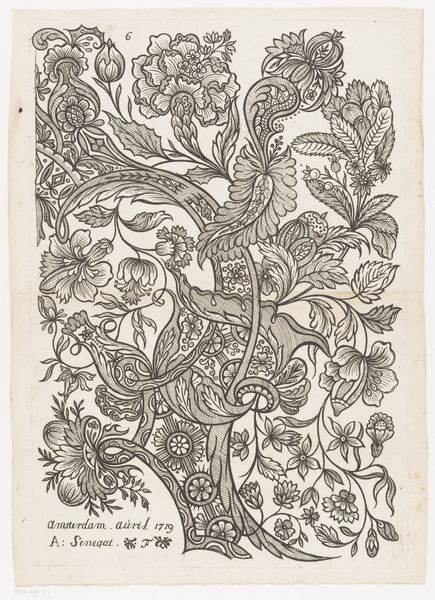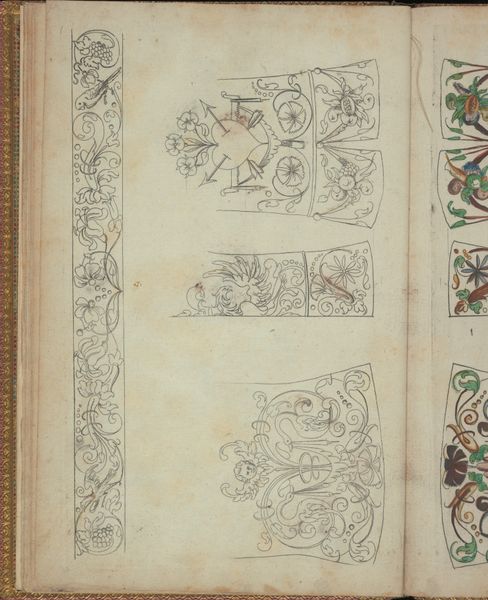
drawing, watercolor
#
drawing
#
medieval
#
watercolor
#
decorative-art
#
miniature
#
watercolor
Dimensions: overall: 51.1 x 38.5 cm (20 1/8 x 15 3/16 in.) Original IAD Object: W. OM 34; H OM 209
Copyright: National Gallery of Art: CC0 1.0
Curator: Page Coffman’s "Pa. German Fractur Designs," created around 1937, presents a series of watercolor drawings, offering a glimpse into the vibrant tradition of Pennsylvania German folk art. What’s your initial take? Editor: I’m immediately struck by the overt artificiality here: that this drawing documents design concepts and their transformations. We get several competing frames in one picture, and that feels very revealing, or almost didactic, about the nature of creative reproduction. Curator: Indeed. These designs recall the illuminated manuscripts of the medieval period, but were commonly used in Pennsylvania for decorating documents like birth and marriage certificates. The use of vivid colors and stylized motifs is immediately arresting, linking visual elements with potent personal markers. The script itself becomes iconographic, carrying as much meaning as the symbolic imagery that decorates it. Editor: What's powerful is how they weave together spiritual, cultural, and social meanings, which can be unpacked in many different registers. For marginalized groups, how might art offer frameworks to produce identity when official avenues of social and cultural production are barred? What type of cultural transmission would that engender? Curator: It is certainly worth noting how visual traditions help sustain memory in community. The heart motif in the design is frequently encountered in this type of artwork. The stylized birds symbolize freedom and prosperity, perhaps even love, while the inclusion of fraktur lettering showcases the pride associated with literacy. We're seeing material culture directly informing social aspiration and identity. Editor: I think situating this within a larger context of early 20th century immigration and ethnic tension is vital. Given that these objects often signaled belonging and heritage, how were they perceived in moments of hostility towards German immigrants, for instance, during the World Wars? Can such a design become a declaration of resistance? Curator: Yes, absolutely. I would underscore your suggestion and say that "Fractur Designs" isn’t merely a decorative piece but acts as an assertion of cultural identity during times of duress and displacement. These illustrations speak volumes about resistance and community-building. Thank you for reminding us how historical context radically informs interpretation. Editor: Thanks to you! I learned to better appreciate how art and cultural transmission play crucial roles, and the designs symbolize belonging, aspiration, and, at times, silent rebellion.
Comments
No comments
Be the first to comment and join the conversation on the ultimate creative platform.
